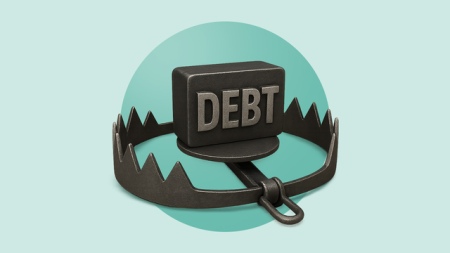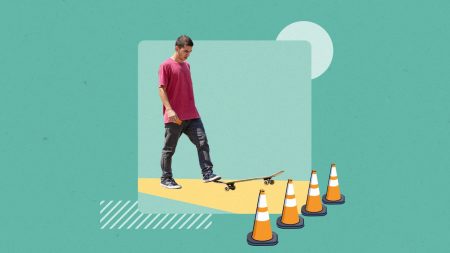If you’re struggling with debt, you might wonder if tackling it on your own is truly possible. Managing your debt independently is possible, but it requires planning and discipline. Creating your own debt relief plan can be cost-effective, especially if you’re willing to contact creditors directly and closely monitor your finances.
However, DIY debt relief isn’t your only option. Professional debt relief services can save time and reduce stress by negotiating on your behalf or consolidating your debts into simpler monthly payments.
How to create a DIY debt relief plan
You don’t need expert credentials — just a clear plan and consistency. Here’s how to get started.
1. Review your spending habits
Start by reviewing your income, expenses, and debts. Knowing where your money goes each month helps you identify areas to cut back and free up funds. Small adjustments — like pausing subscriptions or eating out less — can lead to meaningful progress.
2. Choose an approach
Once you’ve found room in your budget, it’s time to pick a debt payoff strategy. Two popular options are the debt snowball and the debt avalanche methods:
- Debt snowball
-
Pay off the smallest debt first to build momentum.
- Debt avalanche
-
Pay off the highest-interest debt first to save the most money.
Choose the method that aligns best with your financial goals and your personal motivation style. Consistency is more important than perfection.
3. Request relief from creditors
If you’re struggling, contact creditors before you miss a payment. Many will offer options to help you through tough financial periods.
- Hardship programs
-
Creditors may temporarily reduce payments or waive fees if you choose to enter a hardship program.
- Payment deferment
-
Creditors may allow you to pause payments, but your debt will likely still accrue interest during this period.
- Direct negotiation
-
Ask creditors for a lower rate or a new payment plan — it may work, even if you’re not a professional.
You may not be successful with every creditor, but trying can sometimes lead to lower costs or more manageable repayment terms.
4. Consider consolidation
Debt consolidation can simplify repayment by rolling multiple balances into a single monthly payment. Two common tools are:
- Debt consolidation loans
-
The best debt consolidation loans have low interest rates and allow you to pay off multiple balances at once — switching you to a single monthly payment.
- Balance transfer credit cards
-
A balance transfer card may offer a 0% annual percentage rate (APR) for a limited time, usually between 12 and 21 months. However, there is often a one-time balance-transfer fee of a certain percent on the entire balance.
5. Readjust your budget frequently
As you pay off debts, revisit your budget monthly. Shift freed-up funds to your next priority. For example, if you pay off a high-interest credit card, roll that payment toward another card to speed up the next payoff date. Regular check-ins help you track progress, meet your goals and stay motivated.
6. Avoid additional debt
Avoid new debt while paying down balances — especially credit cards. Adding more debt could leave you unable to meet your payments. High debt levels can also make it harder to qualify for loans or credit cards because of a high credit utilization ratio. Stick to the bare basics while paying off debt, and work on building your emergency fund so you can cover unexpected expenses more easily in the future.
Risks of debt relief
While debt relief can be a smart strategy, it’s not without potential downsides. Before committing to any approach, it’s important to understand the risks involved.
- Damage to credit: Late or missed payments, high credit utilization or negotiating for settled balances can all negatively affect your credit score, especially in the short term.
- Creditors can reject negotiation: Not all creditors will agree to modified payment terms, especially if you’re trying to negotiate directly. Even if an agreement is made, the new terms may not significantly reduce your burden.
- Slows down other financial goals: Directing all available funds toward debt can delay progress toward other goals, like saving for a home, investing or building an emergency fund.
- Potential fees: Whether you’re working with a debt relief company or using tools like balance transfer cards or consolidation loans, fees can add up. These may include loan origination fees, balance transfer fees, interest after promotional periods or fees charged by a credit counseling agency.
- Lump-sum payments may be required: Some creditors will only settle a debt in exchange for a lump-sum payment, which can be difficult to afford without upfront savings.
- Forgiven debt may be taxable. If a creditor agrees to settle your debt for less than you owe, the forgiven amount may be considered taxable income by the IRS.
Being aware of these risks ahead of time can help you choose the right approach and take steps to protect your financial future.
Keep in mind:
Being aware of these risks ahead of time can help you choose the right approach and take steps to protect your financial future.
What are the alternatives to DIY debt relief?
If managing debt on your own feels overwhelming, there are other options available. Professional debt relief services can offer structure, support and negotiation expertise, though they often come with added costs or long-term impacts. The following includes four common alternatives to consider.
Debt settlement
The debt settlement process involves negotiating with creditors to pay less than the total amount owed — typically in a lump sum. This process is often handled by a debt settlement company, which charges a fee for the service, usually a percentage of the settled debt.
While debt settlement can reduce your balances, it comes with significant risks. Creditors aren’t obligated to accept a settlement, and the process often requires you to stop making payments, which can severely damage your credit score. Settled debts may also be considered taxable income by the IRS. Most settlement plans take two to four years to complete.
Credit counseling
Credit counseling is a free or low-cost service that helps consumers understand their financial situation and explore options for managing debt. Nonprofit credit counseling agencies typically offer one-on-one sessions to review your budget, credit report and debts. A credit counselor may also recommend next steps, such as enrolling in a debt management plan (DMP).
There is little to no risk in speaking with a certified credit counselor, and the session usually takes about an hour. However, be sure to choose an agency accredited by the National Foundation for Credit Counseling (NFCC) or the Financial Counseling Association of America (FCAA) to avoid scams.
Debt management
A debt management plan, or DMP, is a structured repayment plan set up through a credit counseling agency. The agency negotiates with your creditors for lower interest rates or waived fees and consolidates your debts into a single monthly payment, which you make to the agency. They then distribute payments to your creditors.
Debt management plans typically last three to five years. While this approach can simplify payments and reduce interest, you’ll usually need to close your credit card accounts, which, in addition to the inconvenience of not having a credit card, can impact your credit utilization and score. Some agencies also charge a small monthly fee.
Bankruptcy
Bankruptcy is a legal process that can discharge or restructure your debts when repayment is no longer feasible. There are two main types of bankruptcy for individuals:
- Chapter 7
-
Eliminates eligible debts through asset liquidation.
- Chapter 13
-
Involves a court-approved repayment plan over three to five years.
While bankruptcy can offer a fresh start, it has serious consequences. It remains on your credit report for seven to 10 years and can make it difficult to qualify for credit, loans or even rental housing during that time. It also may not erase certain debts, such as student loans or back taxes.
Bottom line
DIY debt relief is absolutely possible. For many people, it’s a cost-effective way to regain control of finances. But it requires commitment, patience and a willingness to stay organized and proactive with creditors.
If your debt feels unmanageable or you’re unsure where to start, professional options like debt management plans, credit counseling or even bankruptcy may offer the structure and support you need. While these services often come with fees or long-term consequences, they can simplify the process and provide relief for those dealing with significant financial challenges.
Ultimately, the best approach is the one that fits your financial situation and helps you move toward a more stable, debt-free future.
Read the full article here









